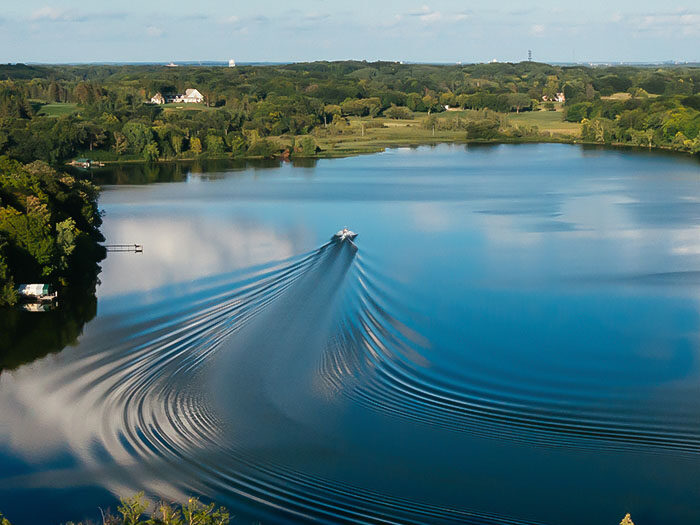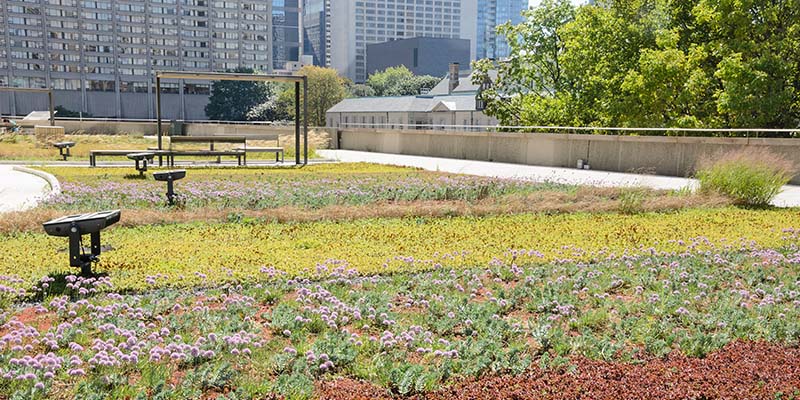
Best Practices
Make an Impact in Your Community
In most urban, rural, and suburban areas, your street connects to downstream lakes, wetlands, and streams through the storm sewer system. Water runs off your street and yard into storm sewers, collecting pollutants along the way.
There are many ways you can support water quality by taking action to improve residential properties, homes near water bodies and larger-scale community projects.
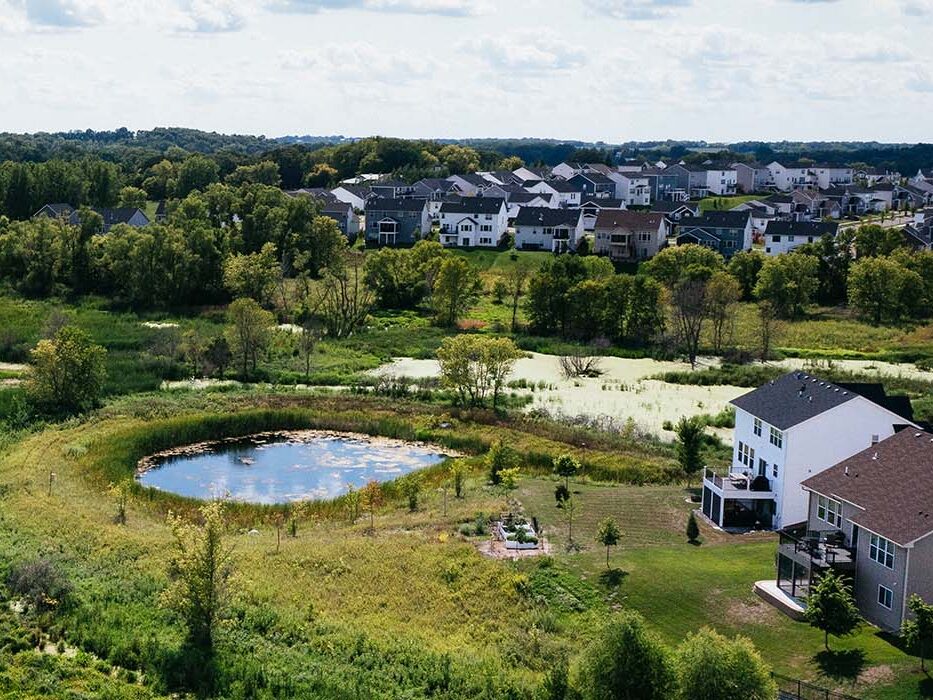
Residential Practices
Your lawn is a great place to start. What you do at home affects the health of nearby bodies of water.
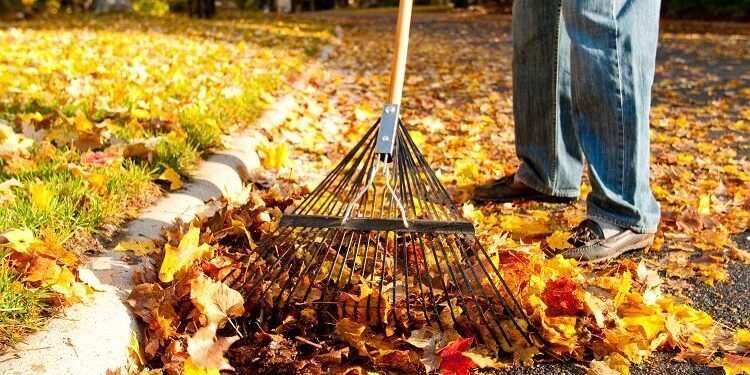
Clean Water Yard Maintenance
When rain falls on hard surfaces, the water flows into the storm sewer and toward the nearest water body, carrying everything it picked up from your yard. You can prevent lawn pollutants from reaching our waters by watering wisely, raking up grass and leaves, and cleaning up after your pets.
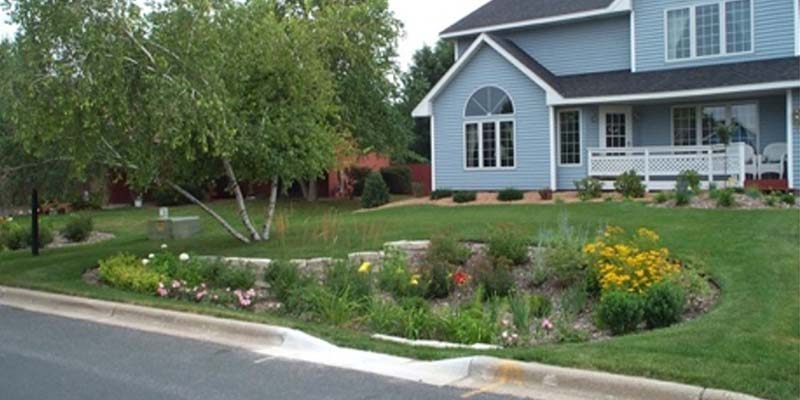
Rain Gardens
Rain gardens can filter polluted runoff and reduce the amount of water that runs into the stormwater system. Organizations like MetroBlooms and BlueThumb also provide resources to help you build a rain garden.
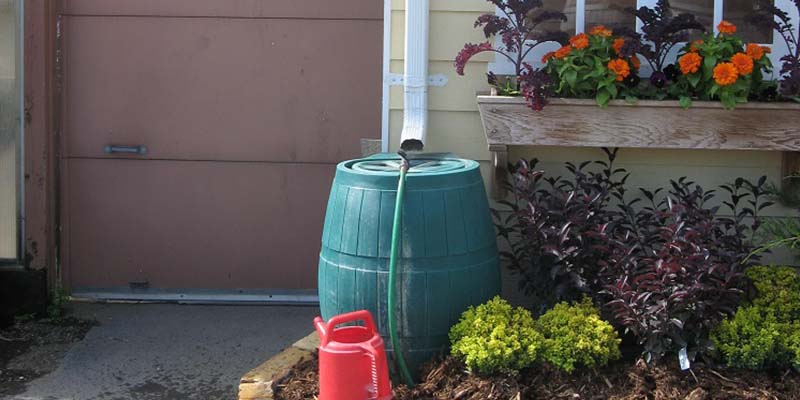
Rain Capture
Stormwater can become a valuable resource when it is captured for use, and by storing it to use in your garden, you prevent the water from gathering pollutants and making its way to a nearby water source.
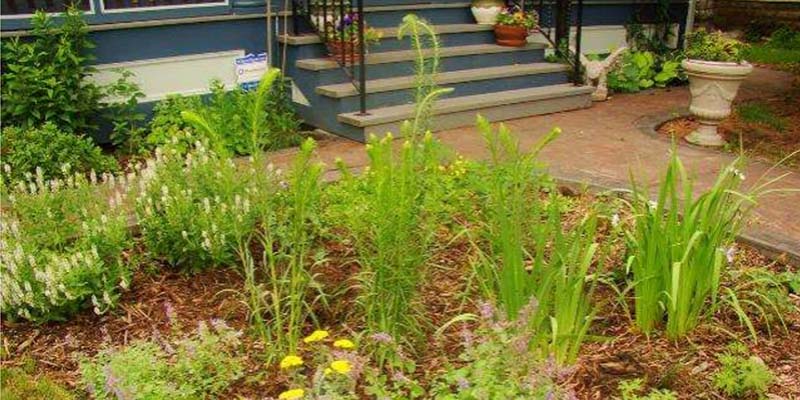
Native Plants
Native plants can be a great way to naturally manage runoff because they evolved here to withstand ecological and climate pressures. These plants are hardy and easy to grow in your lawn or garden. Many make great pollinator habitat, too!
Homes Near Water Bodies
If you live on a lake, creek, pond, or wetland, there’s even more you can do to maintain and improve local water quality.
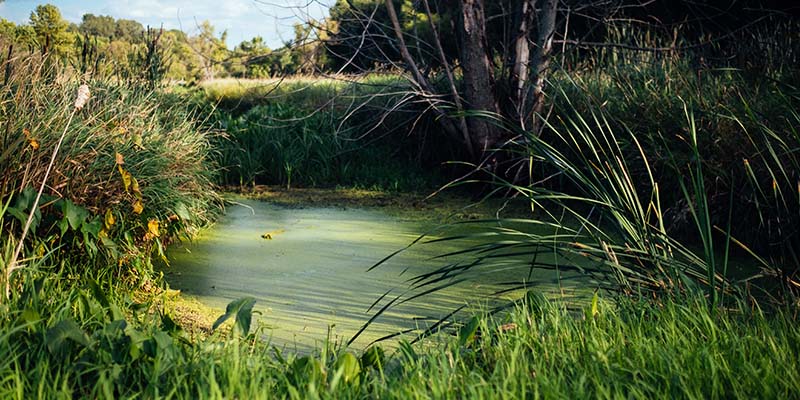
Shoreline & Streambank Restoration
Shorelines and streambanks are an important part of aquatic ecosystems. These areas must be managed properly to ensure the health of our lakes, rivers, and streams. Doing a streambank project? You might need a permit.
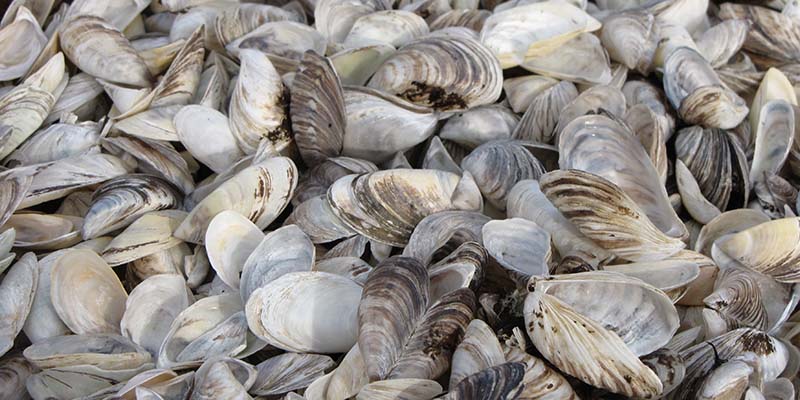
Aquatic Invasive Species
Aquatic invasice species (AIS) such as Eurasian watermilfoil and zebra mussels can damage aquatic ecosystems, but you can help prevent their spread! Clean, drain, and dry any materials that are transported from one waterbody to another. Remember, it is illegal to transport AIS!
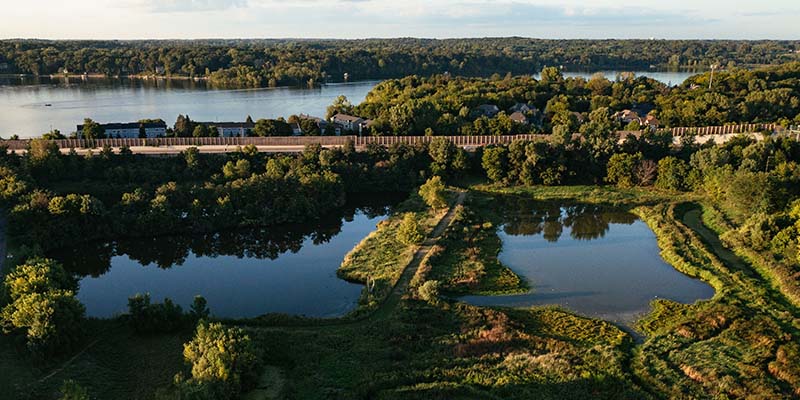
Wetland Restoration & Buffers
Wetlands function as natural sponges that trap and slowly release surface water, rain, snowmelt, groundwater and flood waters. One of the most effective ways to protect a wetland is to establish and maintain a natural buffer area around it. Doing a project near a wetland? You might need a permit.
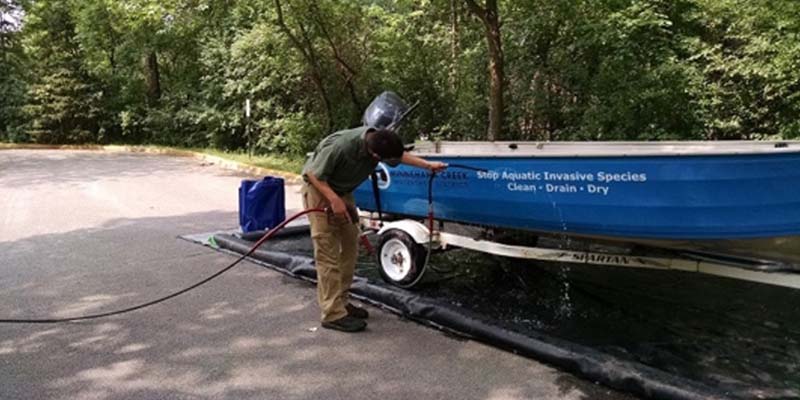
Docks and Equipment
Docks and other watercraft equipment can be carriers of Aquatic Invasive Species (AIS). Make sure to inspect and clean your docks and other submerged equipment before putting them in and after taking them out to prevent the spread of AIS in the watershed.
Large-Scale Projects
If you’re working on a larger landscaping project with a business, homeowner association, or school, many of these strategies could be implemented to improve water quality in the area. Ask your contractor about these clean water options. Depending on the size and scope of your project, you might be eligible for support from our Land & Water Partnership program.
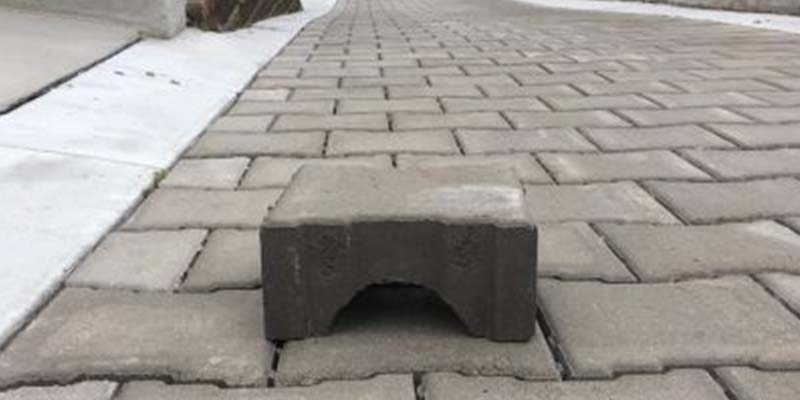
Porous Pavement
Porous (or pervious/permeable) pavements are surfaces that allow water to filter and flow through them, greatly decreasing problems associated with runoff. Contractors can help you design and install porous pavers for your project.
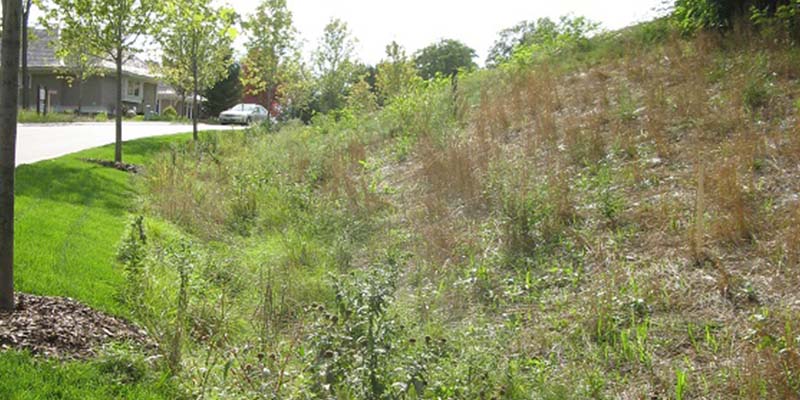
Vegetated Swales
Vegetated swales (also known as grass swales) are shallow areas built to store, filter and transport small amounts of water before it gets to nearby storm drains.
Supporting Clean Water
Many of our partner organizations offer financial or technical assistance for best practices implemented at your home or business.
